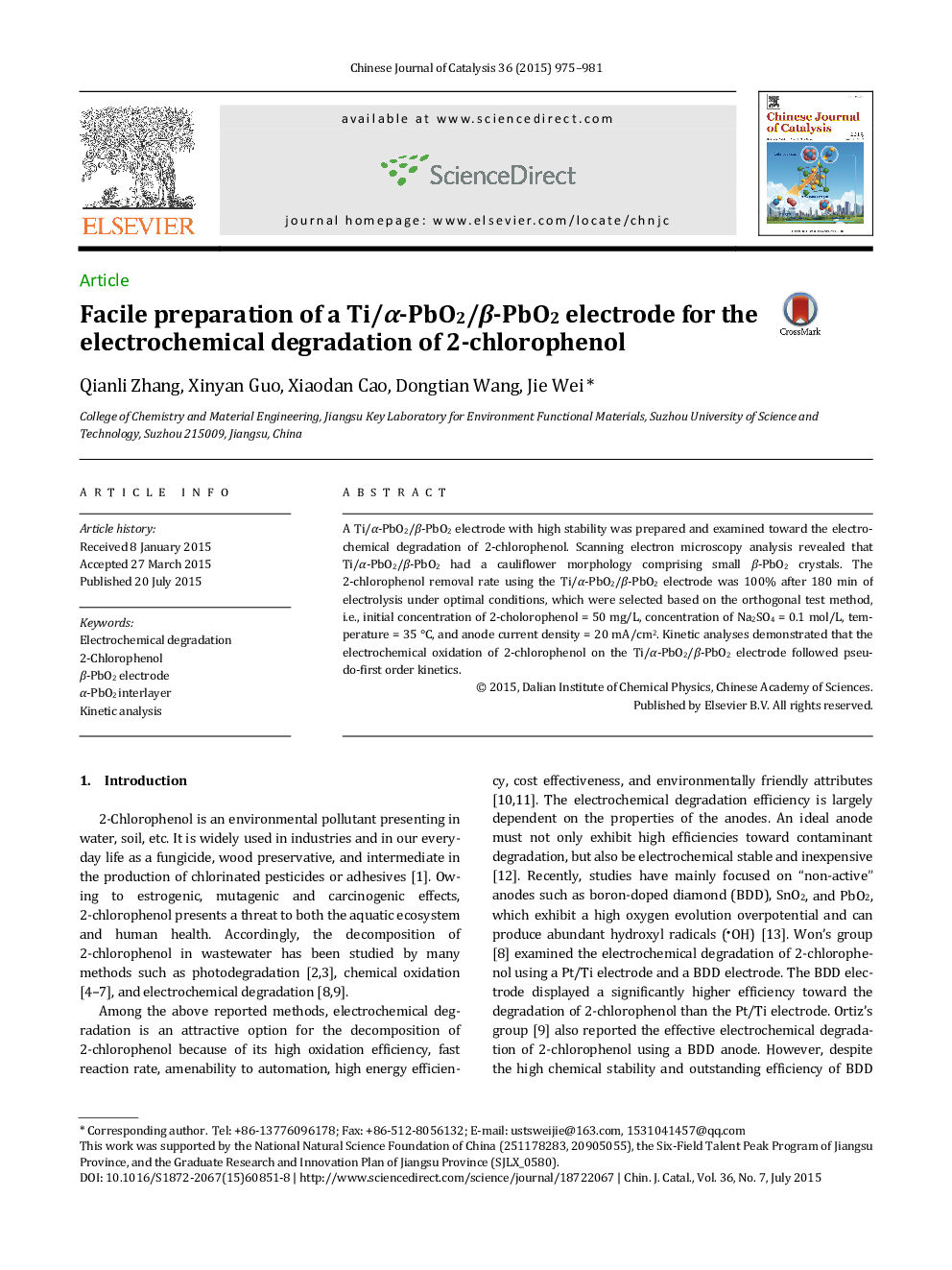| Article ID | Journal | Published Year | Pages | File Type |
|---|---|---|---|---|
| 58944 | Chinese Journal of Catalysis | 2015 | 7 Pages |
A Ti/α-PbO2/β-PbO2 electrode with high stability was prepared and examined toward the electrochemical degradation of 2-chlorophenol. Scanning electron microscopy analysis revealed that Ti/α-PbO2/β-PbO2 had a cauliflower morphology comprising small β-PbO2 crystals. The 2-chlorophenol removal rate using the Ti/α-PbO2/β-PbO2 electrode was 100% after 180 min of electrolysis under optimal conditions, which were selected based on the orthogonal test method, i.e., initial concentration of 2-cholorophenol = 50 mg/L, concentration of Na2SO4 = 0.1 mol/L, temperature = 35 °C, and anode current density = 20 mA/cm2. Kinetic analyses demonstrated that the electrochemical oxidation of 2-chlorophenol on the Ti/α-PbO2/β-PbO2 electrode followed pseudo-first order kinetics.
Graphical AbstractA cauliflower-structured Ti/α-PbO2/β-PbO2 anode displays high activity toward the degradation of 2-chlorophenol, with a long active service life of 68.4 years at a current density of 20 mA/cm2.Figure optionsDownload full-size imageDownload as PowerPoint slide
